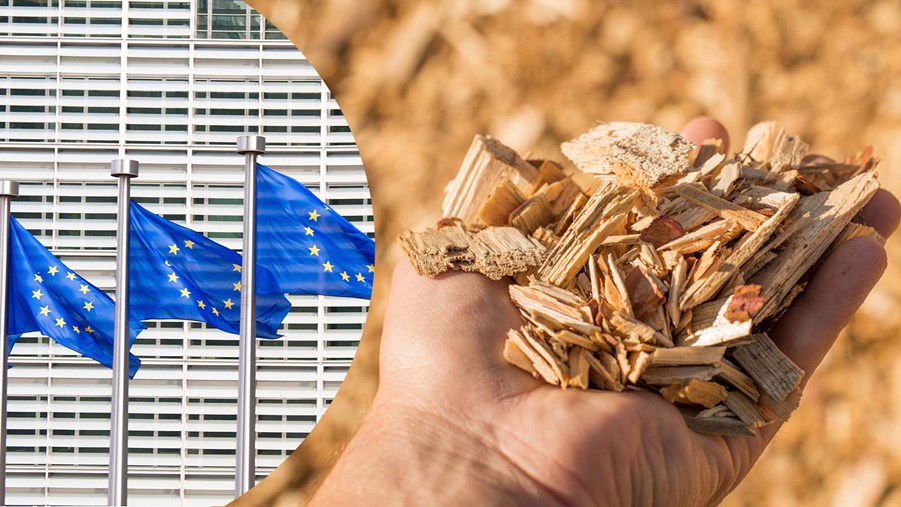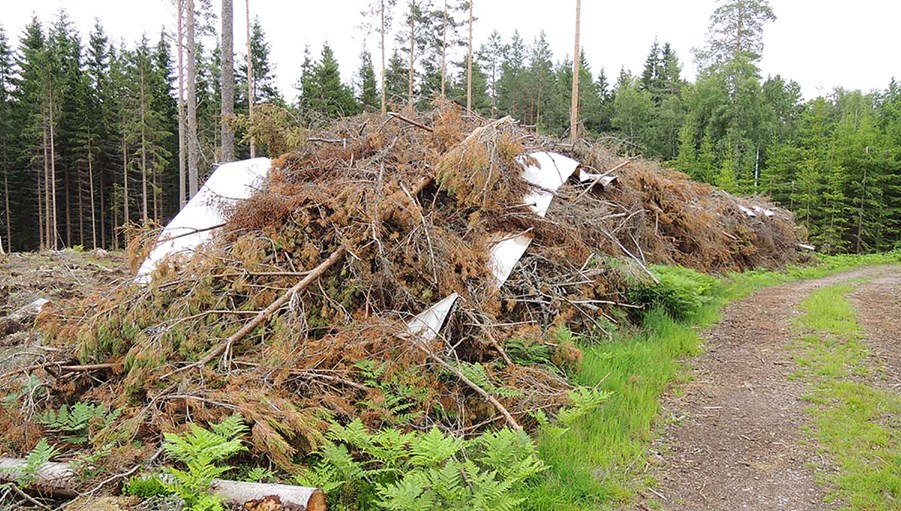
In July 2022, the European Parliament’s environment committee (ENVI) took a position against using primary woody biomass for energy purposes, such as tops and branches. Next week, it will be put to a vote in plenary. A new impact assessment for Sweden shows that ENVI’s position would leave the EU less equipped to fight climate change.
“Restricting energy use of all primary woody biomass, including all waste and residues from sustainable forest management, would have dire consequences. In Sweden, this is a matter of great societal concern. We use residues from forestry to heat our homes, to fuel our cars and industry, and to substitute for fossil fuels anywhere we can. ENVI should see energy use of residues from sustainable forestry as a solution, not to be restricted but expanded as a tool to fight climate change and make the whole EU more energy self-sufficient”, says Viveka Beckeman, Director General for the Swedish Forest Industries Federation (SFIF).
A new impact assessment of ENVI position on RED
Together with other Swedish organizations related to energy and forestry, SFIF has produced an impact assessment of the ENVI position on RED III for Sweden. The focus is placed on the restriction on primary woody biomass and its impacts on the Swedish energy system, but not to the overall forest-based bioeconomy.
So, what is the ENVI position on primary woody biomass in RED III? ENVI does not want primary woody biomass to be counted towards renewable energy targets, thereby removing all financial or regulatory support to it. This would lead to sustainable biomass fuels being treated as fossil fuels in taxation and the EU ETS. The ENVI position also entails an ambition to prevent clear-cutting practices in forestry.
“Preventing the use of waste and residues from all forestry, including clear-cutting practices, only means that much of the residues will be left in the forest. In many cases without clear benefits for biodiversity and society. The only significant impact is that Sweden and Europe are abruptly cut off from yet another important energy source”, says Mårten Larsson, Head of Bioenergy Policy at SFIF.
Sweden and EU will not be able to reach its climate goals
Sweden has the second lowest greenhouse gas emissions per capita in the EU and the most ambitious climate targets, including a net-zero target by 2045 and minus 70 percent emissions from domestic transport in 2030. The forest-based bioeconomy, including waste and residues for bioenergy, is a core climate mitigation solution in Sweden and an important one for the EU as a whole. About 60 percent of renewable energy used in the EU comes from biomass, and primary woody biomass is a significant part of that.
In Sweden, large emission reductions have already been achieved by replacing coal and oil in heat and power production. Primary woody biomass is also crucial for reducing emissions in the future, by using it to develop biofuel for transportation, carbon capture technology (BECCS), fossil-free industrial processes and more. In total, the current and future emissions reductions could decide whether climate goals in Sweden and the EU will be met.
“The scientific overviews from IPCC and the EU JRC clearly show that biomass is an important part of a climate neutral energy system. Sweden as a country aspires to be a frontrunner in the fight against climate change. Our energy system reflects that ambition”, says Mårten Larsson.
“Investments in bioenergy have been made as a result of progressive climate policy and the outcome has been successful. Emissions are dramatically lower and the energy system is more flexible and robust. We want to build further on that success with even more advanced and sustainable bioenergy solutions and help other Member States to do likewise. For that we need predictable and stable EU legislation, including sustainability criteria for primary woody biomass that are based on science. We encourage the Members of the European Parliament to consider this in the upcoming vote on RED III”, concludes Mårten Larsson.




